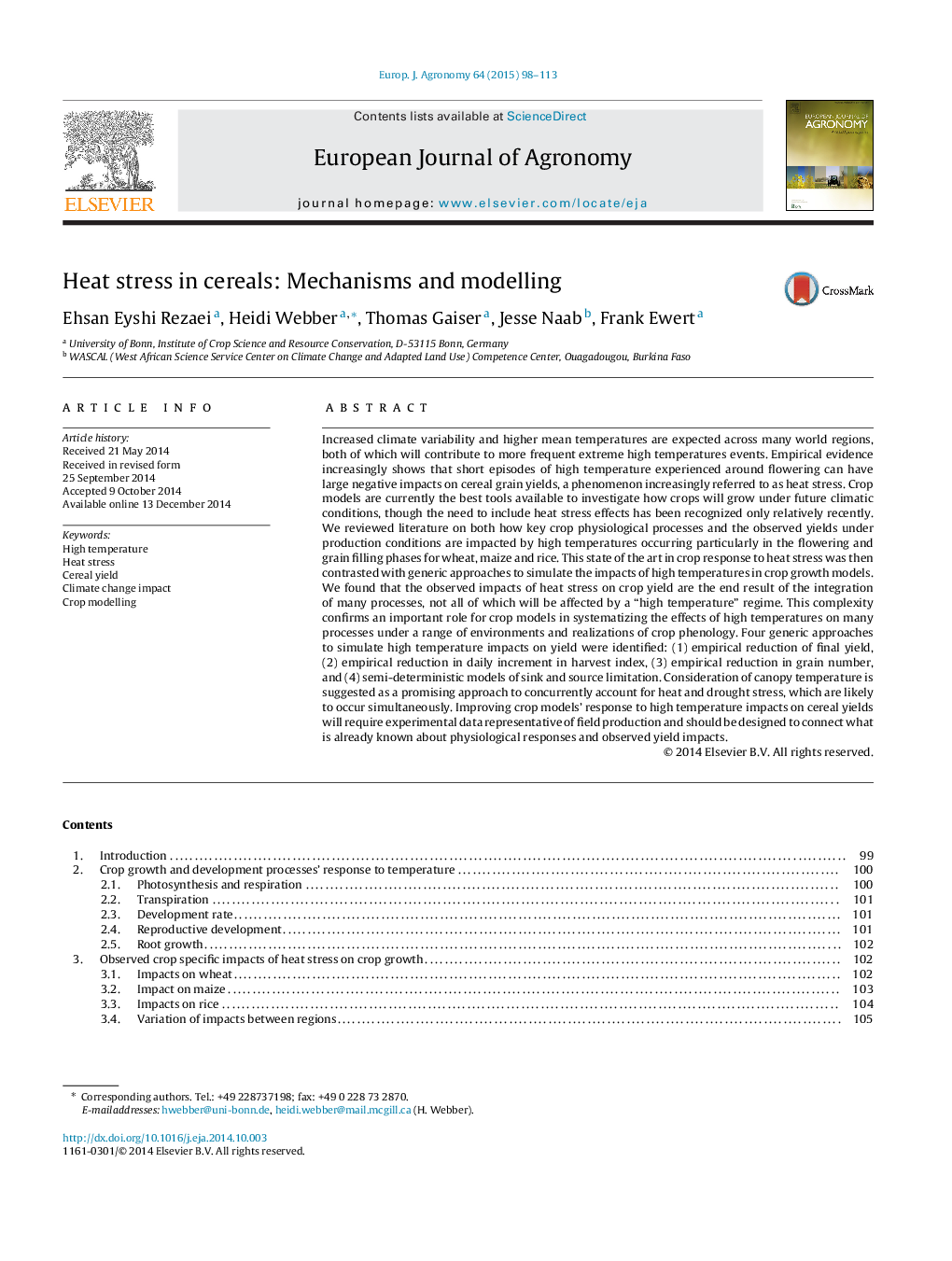| کد مقاله | کد نشریه | سال انتشار | مقاله انگلیسی | نسخه تمام متن |
|---|---|---|---|---|
| 4508828 | 1624461 | 2015 | 16 صفحه PDF | دانلود رایگان |
• Short episodes of high temperature near flowering can have large negative impacts on grain yields.
• Observed impacts of heat stress on crop yield is the end result of the integration of many processes.
• Most crop modellers have only recently recognized the need to improve heat stress responses.
• Various generic approaches to simulate high temperature impacts on yield are possible.
• Simulation of canopy temperature can allow to concurrently account for heat and drought stress.
Increased climate variability and higher mean temperatures are expected across many world regions, both of which will contribute to more frequent extreme high temperatures events. Empirical evidence increasingly shows that short episodes of high temperature experienced around flowering can have large negative impacts on cereal grain yields, a phenomenon increasingly referred to as heat stress. Crop models are currently the best tools available to investigate how crops will grow under future climatic conditions, though the need to include heat stress effects has been recognized only relatively recently. We reviewed literature on both how key crop physiological processes and the observed yields under production conditions are impacted by high temperatures occurring particularly in the flowering and grain filling phases for wheat, maize and rice. This state of the art in crop response to heat stress was then contrasted with generic approaches to simulate the impacts of high temperatures in crop growth models. We found that the observed impacts of heat stress on crop yield are the end result of the integration of many processes, not all of which will be affected by a “high temperature” regime. This complexity confirms an important role for crop models in systematizing the effects of high temperatures on many processes under a range of environments and realizations of crop phenology. Four generic approaches to simulate high temperature impacts on yield were identified: (1) empirical reduction of final yield, (2) empirical reduction in daily increment in harvest index, (3) empirical reduction in grain number, and (4) semi-deterministic models of sink and source limitation. Consideration of canopy temperature is suggested as a promising approach to concurrently account for heat and drought stress, which are likely to occur simultaneously. Improving crop models’ response to high temperature impacts on cereal yields will require experimental data representative of field production and should be designed to connect what is already known about physiological responses and observed yield impacts.
Journal: European Journal of Agronomy - Volume 64, March 2015, Pages 98–113
